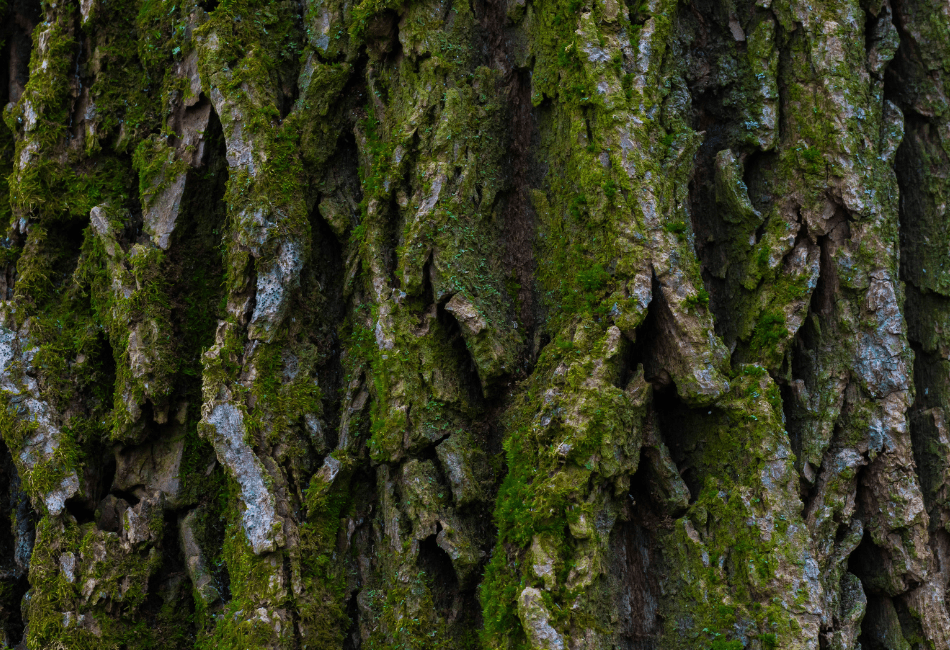- How to Rot a Tree Stump Fast with Chemicals - December 8, 2023
- Portable Sawmill Rental Guide: Potential Rental Options - December 25, 2022
- Best 18 Inch Chainsaw Chains Worth Your Investment - December 19, 2022
Elmwood has been used reliably throughout history across different cultures and areas worldwide. People have enjoyed this wood’s quality and continued using it, from wagons to remarkable furniture. However, that doesn’t mean it can be used for everything. Exploring the properties of elm wood will help you use it correctly without any disheartening surprises.
I’m excited to present you with my elm wood uses guide to help chart a course for your woodworking endeavors with this endearing species. I also encourage you to spend time with an elm wood tree and enjoy its natural uses, like getting shady respite away from the blistering sun on a hot day.
Elmwood trees can live for hundreds of years and tower above us majestically without a problem. They are naturally beneficial when alive through the abundant shade and shelter they provide for birds, but there are countless other uses when prepared for woodworking. Here I’ll go through the many benefits of elm wood and its positive impact on daily living!
You’re on your way to discovering the benefits of elm wood and how to use it. I am here to enlighten you regarding the possibilities and encourage you to take on the challenges of using this splendid type of wood. The results are certainly worth the effort, so let’s get started!
Bottom Line Up Front
There are many species of elm wood, and it is considered to be a soft hardwood. It is durable and tough when not exposed outdoors but weak against rot and insect infestations. If you have sharp tools, cutting through the interlocking grains is more manageable, and you can craft many exceptional items with elm wood. These include boxes, baskets, tools, sports equipment, hilts, furniture, and pulpwood for paper production.
What Is Elm Wood?
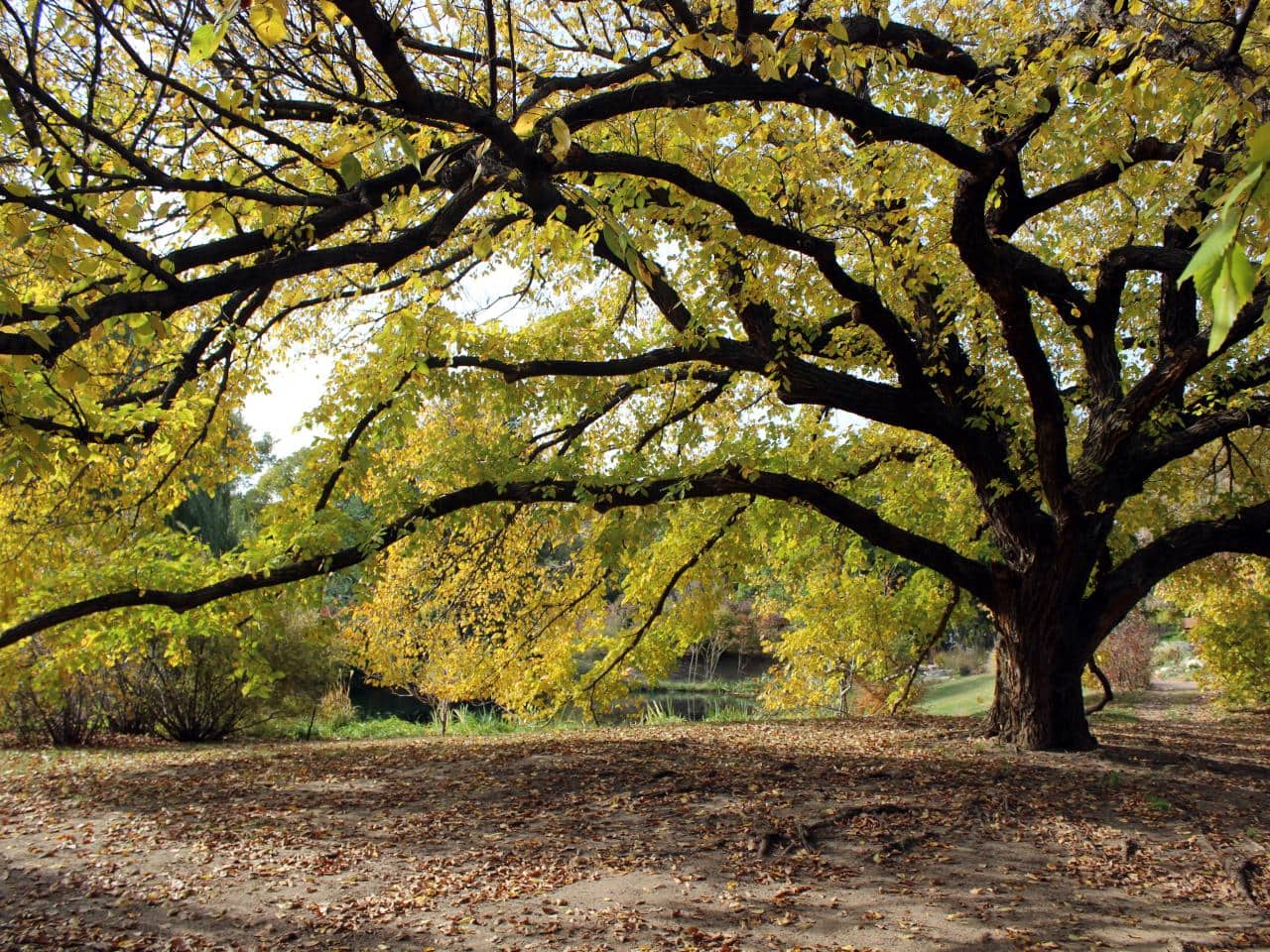
Elmwood has the genus Ulmus and is part of the deciduous or semi-deciduous family. With an impressive thirty-five species, they can reliably be found throughout Western Europe and North America. These trees can grow up to eighty feet tall in the wild and command respect by simply being next to one. The first use for the elmwood tree is to enjoy its visual appeal. It is considered a decorative tree that works well in parks and roadsides to enhance the city’s natural landscape.
This wood is highly versatile with different uses, and it’s remarkable how tough it is even though it’s mostly lightweight. There are two types of wood that you can get from an elm tree, sapwood or heartwood. The sapwood is a lighter coloration, and the heartwood is a darker brown, so you have different stylistic possibilities when crafting or buying.
Key Properties of Elmwood
It’s a Soft Hardwood
This is where elm wood might be slightly deceiving on the market. It’s technically a hardwood because it’s harvested from deciduous elm trees. However, this doesn’t mean it will be highly dense or have unparalleled hardness in the wild. The elm trees in nature are relatively soft, but when converted to usable lumber, they become sturdy and prove to be a solid reliable material.
It’s considered on the lower end of the spectrum than other hardwoods. Don’t let this discourage you because it works incredibly well with the right tools and creative vision. The grain pattern of this soft hardwood is a favorite for industry and personal projects.
Rot Resistance
Rot resistance is not the elm tree’s forte, and it is highly susceptible to contracting problems such as the Dutch Elm Disease. It is also weak against insects that contribute to premature rotting that can kill an elm quickly. Elmwood is considered non-resistant to rot, which applies when it’s dried too. Decay is a natural part of a tree’s lifespan, but this species is particularly vulnerable to outdoor elements.
You must take extra precautions when working with elm wood, limiting it to indoor use. Keeping elm wood inside is better because its vulnerability can become a problem for your whole home. That’s because pests are attracted to items they can infiltrate easily and then continue attacking the surrounding area.
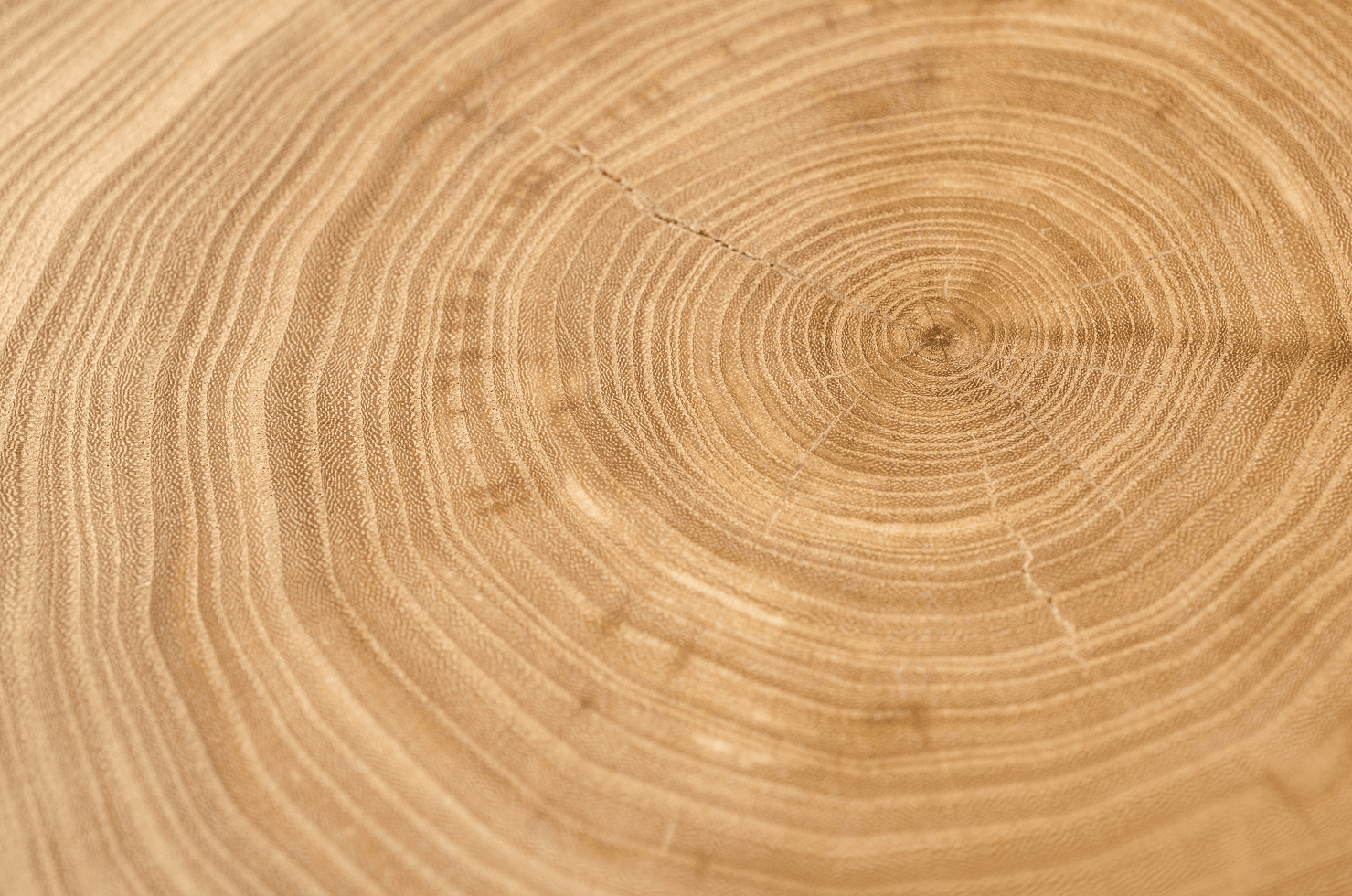
Overall Workability
Most hardwoods have a straight grain pattern, making them easier to cut and manage during crafting. They all have the potential for anomaly cuts with some complex grains, but elmwood is naturally interlocking. This means that elmwood’s workability is slightly less pleasant than working with other straight-grained traditional hardwoods.
Because of this, It’s better to have some experience before using it and try high-quality tools, so you have no problems cutting through with precision. It also has impressive bending properties, which help you to form shapes for chairs and tables. You can construct various forms using elm wood because it conforms to your will while operating machinery.
The interlocking grain pattern observed with elm wood is highly resistant to splitting. It’s better to stick with woodworking machinery instead of manual tools. Keep in mind that the planing of elmwood can result in less-than-desirable fuzzy surfaces and a lack of dimensional stability when working. Despite this, you can still get an excellent finish and final product through determination.
Appearance & Color
Elmwood is a gorgeous type of wood that can come in many shades. The heartwood has a warm and appealing brown tone that is good for an attractive home or business. The colors range from light brown to medium with some subtle red hues. The sapwood is much lighter and can be tan, off-white, or even greyish-white.
Many people prefer the sapwood of elms because of its distinct and classic quality. The color range and exciting grain patterns draw many to elmwood as a staple in their workshop. It’s what can add a more dazzling flare to any project, and any skilled woodworker will know you chose it for the job based on a single glance.
Texture & Grain
The growth ring pattern of elm wood is distinct and prominent, with an uneven texture that can be challenging to maneuver. Even though it’s open and coarse, this doesn’t hinder the stunning results achieved from elmwood. The complex nature of this wood makes it so breathtaking when you’ve polished the final product. It has a particular aesthetic appearance that is relaxing and a pleasure to enjoy.
Because of the coarse texture, it’s straightforward to stain or dye, so don’t skip this critical step! It will pay dividends to try different stains and determine your favorites. The interlocking grain of elmwood means that it’s highly resistant to splitting. Making sure your tools are sharp is imperative before working with this wood.
Cost of Elm Wood
You will find that elm wood is priced modestly on the market today, and it’s not hard to get your hands on some. It’s affordable with the guarantee you’ll be getting some quality wood. Elmwood is a good bargain compared to other regular hardwoods because it gives you mainly the same properties for a lower price. It’s around ten dollars per board foot for elm. You can get elmwood affordably in various locations like home improvement stores, online shops, hardware stores, and lumber yards.
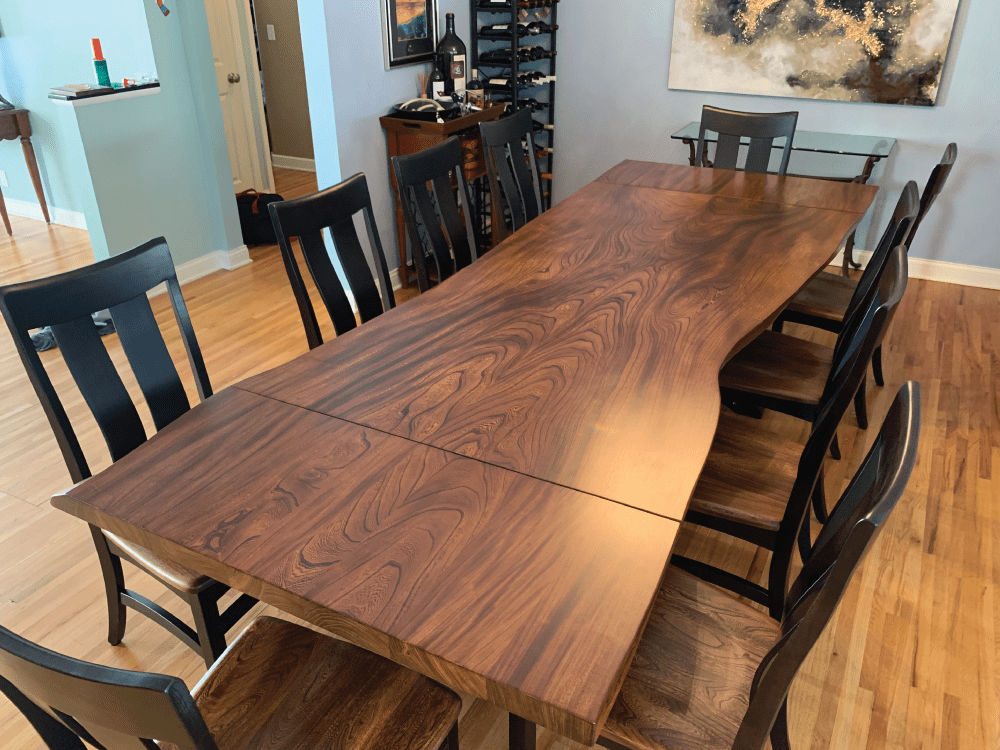
Alternatives to Elmwood
There are some alternatives to elm wood that you should know. After all, it would be unwise to only work with one species your entire life and not broaden your horizon. When searching for replacements for elmwood, you need sturdy and hard properties to accomplish the same job. Here are some other woods to consider if elm isn’t your preference.
- Mahogany
- Black Walnut
- Ash Wood
- Cherry Wood
- Hawaiian Koa Wood
- Alder
- Big Leaf Maple
Most Common Uses for Elmwood
Elegant and Sturdy Furniture
The interlocking grain patterns might be a pain in the shop, but the final result is rewarding with stunning furniture that draws the eye and speaks to your sophisticated style. The attractive appearance of elm is why people opt for this type over others when searching for chairs, tables, couches, stools, and more. However, it would help if you cared to keep these items indoors instead of leaving them on your porch. This is ideal because elm wood is not suited for long-term outdoor sustainability.
Elmwood is incredibly versatile for forging some eye-popping furniture from scratch. It can blend into almost any home and add an intriguing element to the room that guests can’t help but admire. It’s also a great material because of its lightweight, softer quality that retains hefty strength. Hardwood is usually denser and heavier to handle when moving, but moving something like an elmwood table is much easier than other woods.
It is also a viable material for crafting doors or windows and adds a natural vibe to any home. The reality is that most elm wood is used to make furniture because of its elegant appearance. Elm is excellent, and multiple matching items throughout the home can add immense continuity and beauty.
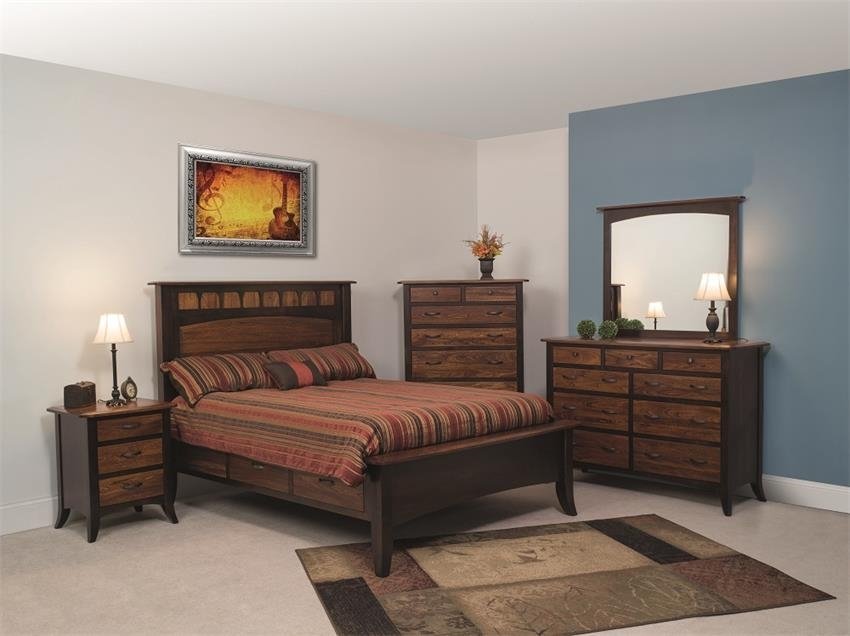
Wooden Hilts
Hilts for tools like knives need to be made from a sturdy material that can effectively endure repetitive shock. Elm is a suitable wood for handles because it doesn’t damage easily and can readily absorb shock without any issues. It has been used to construct grips with great success and continues to be incredibly viable. It’s necessary to consider the properties of a hilt because a tool can become dangerous if there’s a higher risk of breaking. Elm keeps you safer when using different tools and is tried and true!
Baskets & Boxes
Factories that produce boxes and lightweight baskets are fond of using elm wood. This is a widespread practice after considering and comparing the various kinds of wood on the market. Elm is much more lucrative for production purposes and is distinct because of its softwood properties that simultaneously retain great strength. It’s a type of wood that can withstand high amounts of weight without breaking, so it’s a perfect material for crafting boxes.
These structures are known for carrying other heavier machinery, and it’s important they make it safely to their destination. The strength of elm wood is reliable and enduring for the long term, so factories increase productivity with less breakage. It’s easy to construct these boxes and baskets with elm wood, and it’s a highly sustainable practice that will ensure years of use. The only issue that might occur is if they’re exposed to outside weather conditions for too long.
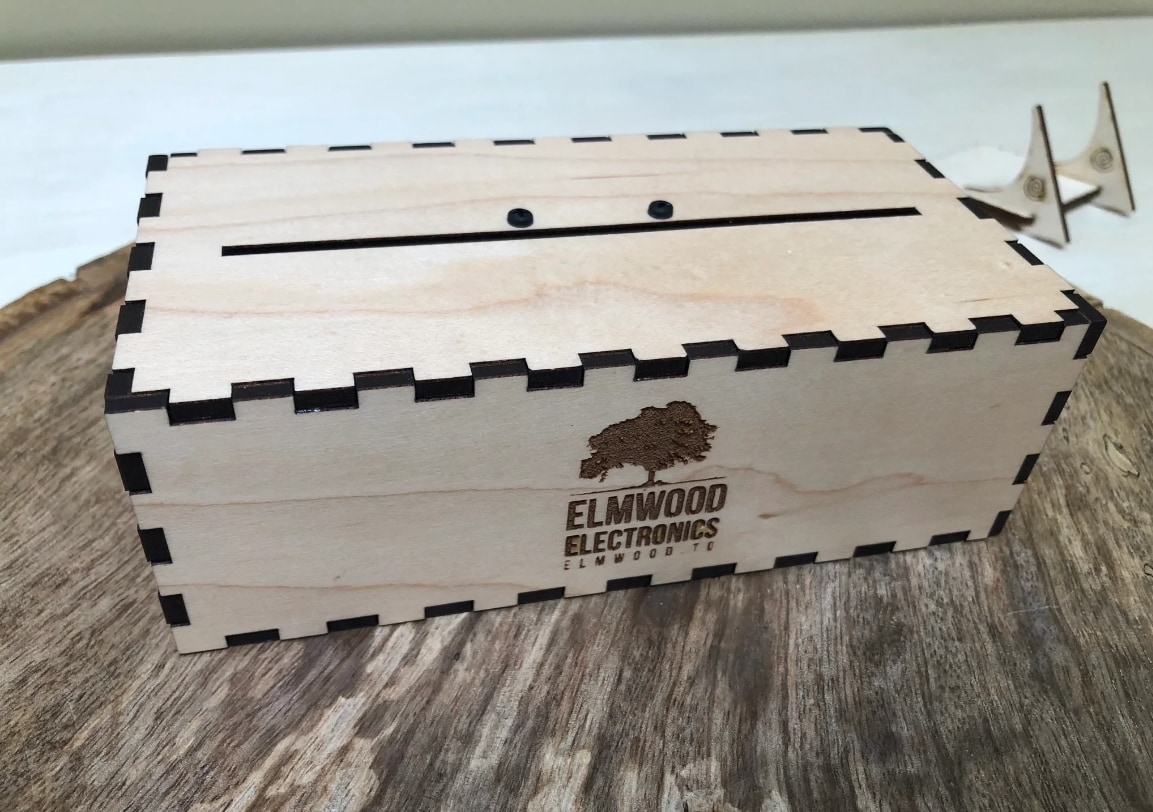
Pulpwood for Paper
Around 16% of the elmwood trees are used for pulp production, filling part of the demand for paper. It produces adequate results and takes the pressure off other species. The history of turning elm into pulp stems far into the past, and there are no signs of it slowing down as a reliable paper supplier. The final result is much like any other wood used for this purpose. There is always a demand for paper, and elm wood significantly contributes to meeting this head-on.
Hockey Sticks & Baseball Bats
As previously mentioned, elmwood has some excellent shock-resistant properties that absorb the impact and maintain the integrity of any wooden structure. They’re perfect for sports because they’re full of repetitive movements. For example, hockey is a sport that requires multiple impacts, from the hitting of other sticks to pelting a puck across large arena hundreds of times throughout its life.
Similarly, baseball bats are exposed to incredible force numerous times when hitting baseballs at high speeds. Therefore, it’s no surprise that elm wood is used for these because of its strength and resistance against splitting. This isn’t to say that the wood is infallible, just less likely to break in the context of sports.

When Shouldn’t You Use Elm Wood?
Using elm wood outdoors for the long term is asking for trouble, and you want to treat any items made of it with respect. Remember that it’s a soft hardwood, making it a target for pesky buggers in nature who are more than happy to eat away at your investment without a conscience. It is unsuitable for outdoor use and has a lower density than many other softwood species.
Despite its robust quality, elm must be handled with care and is best maintained indoors. If you’re brand new to woodworking, then elmwood might not be the best first pick for the shop. However, it gives some valuable experience with interlocking grains. You need appropriately sharpened tools to handle it efficiently without any problems.
The best way to learn is through experience, so it might be better to make a few cuts and get a feel for the grain before starting your official project. Cutting through tricky grains is like driving in the snow; getting the hang of things takes time, patience, and prudence. The results are worth it when you sit in that expertly-crafted elm chair!
Soft & Hard Elm Types
Soft Elms & Their Uses
American Elm
The American elm is also known as the white elm, a well-known deciduous species. It appears as a light reddish brown coloration, and the sapwood can sometimes appear slightly yellow or white. It’s a tall tree that can grow up to 100 feet. The American elm has an interlocking coarse-grain texture, as you would expect from an elm species. The interlocking patterns make it exceptionally resistant to splitting.
This species is used to make boxes, baskets, beautiful veneers, and paper. The lightweight nature of this wood may be easy to work with, but the grain makes it challenging for a novice. Pre-drilling might be ideal if you intend to nail or screw into a board. Like other elms, it is fatally flawed regarding natural rot resistance.
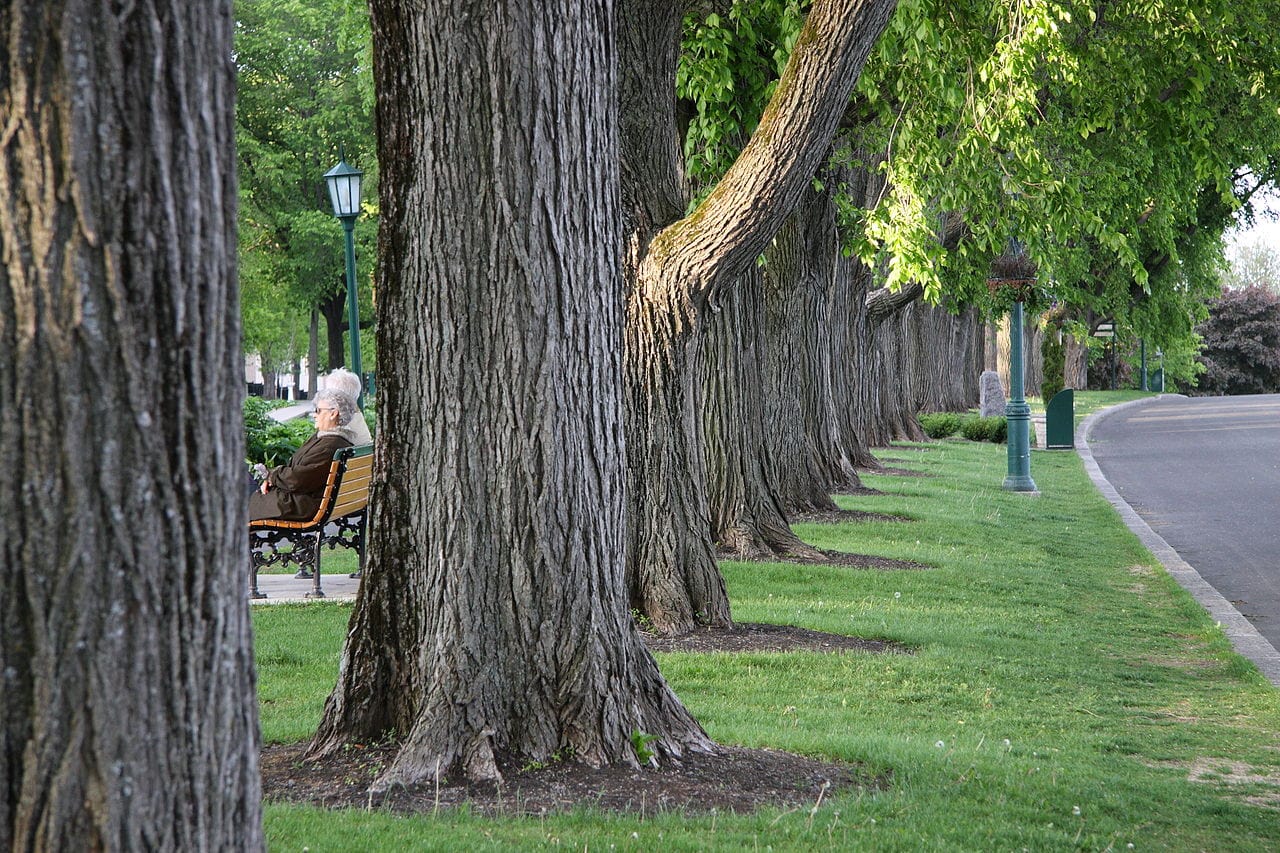
Wych Elm
The Wych Elm also carries the name “Scots elm,” a large deciduous tree that grows in massive groups. Wych elms can reach over 100 feet tall and have a trunk diameter of up to 4 feet. Heartwood and sapwood can be distinguished by noting the different colors. Heartwood is generally much darker than sapwood, and many color variations come from different environments.
Of course, the grain is interlocking and has a medium coarse texture. Wych Elm is used for constructing boxes, baskets, hockey sticks, hilts, and wood pulp. There will be some problems over time, so it’s essential to change your blades frequently in the context of mass production of any item made of Wych Elm.
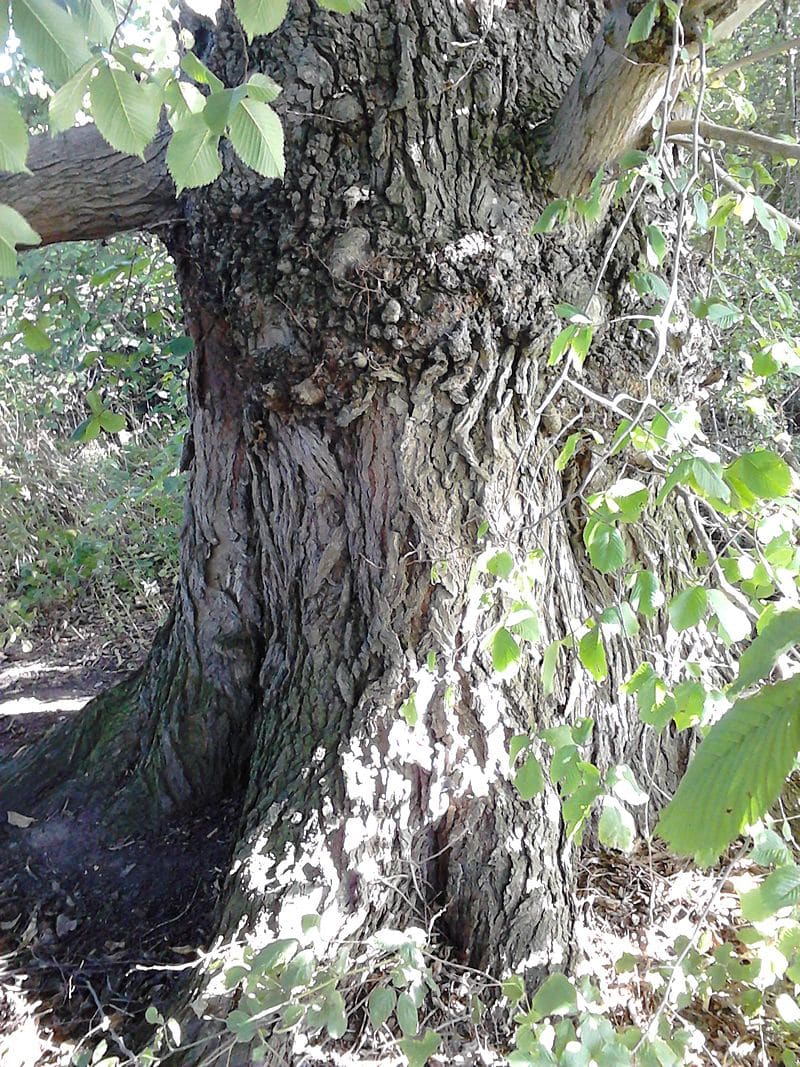
English Elm
The English Elm or Carpathian Elm is a species found within western Europe. It thrives and is one of nature’s giant and fastest-growing deciduous trees. The average tree length is 130 feet, and it towers above all other life. It has a trunk diameter of 6.5 feet and yields a lot of wood. The tallest English Elm ever discovered was 151 feet.
The heartwood is colored a reddish brown hue, and the sapwood is nearly white with tints of yellow. The unstructured and interlocking grain makes the English Elm challenging in the shop, along with an uneven texture. It is commonly used to craft sports equipment, furniture, boxes, veneer sheets, and pulpwood.
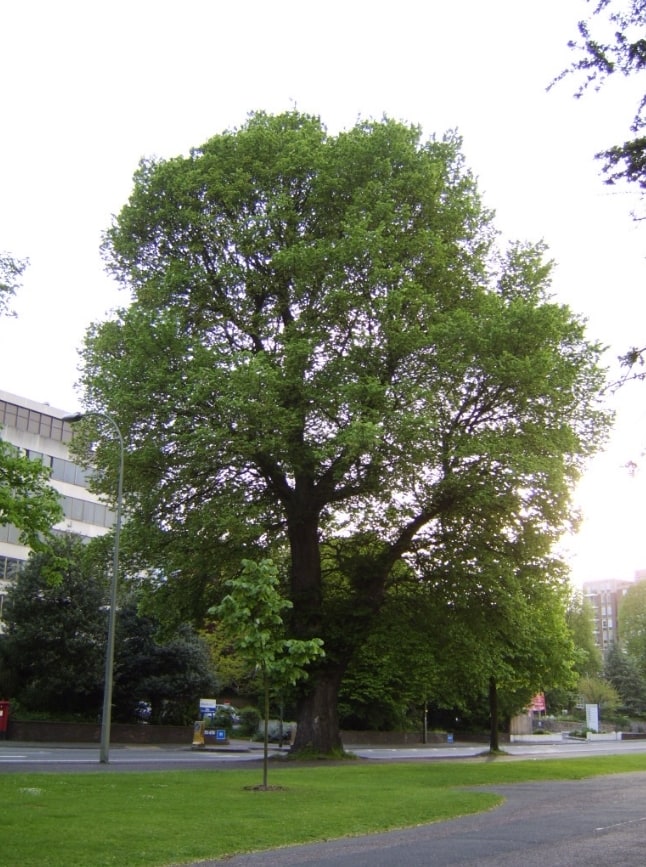
Red Elm
The Red Elm is a species found in North America and has flexibility across most growing conditions. The heartwood coloration is low to medium brown with a reddish tint. The grain is interlocking with a moderately coarse texture. You will observe that red elm is solid for such a lightweight material. That’s why it’s perfect for crafting some convenient furniture that’s easy to transport and unload during a move.
The trees are susceptible to various diseases and rotting in the wild, and lumber is not for outdoor use. This particular species will respond nicely to steam bending. It also is decent when holding nails and screws with reliable results. Red Elm stains well and has a good finish when applied correctly to the final creation. Staining is standard with furniture to give it that extra needed flare!
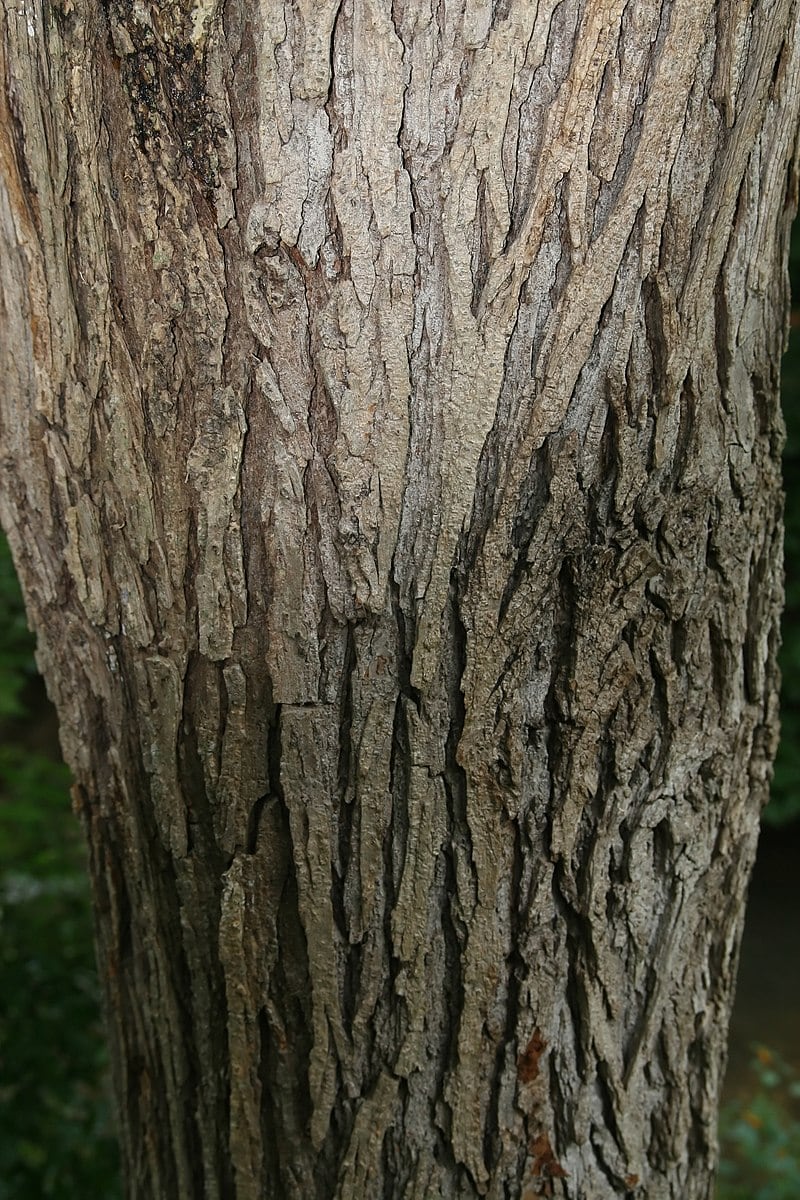
Dutch Elm
The Dutch elm is a hybrid of many other elms and has the same general qualities as traditional elm trees. You will find similar unstructured grains to other elms with interlocking patterns that sometimes surprise you with cutting challenges. The Dutch elm is rarer than other species but has an aesthetic appeal that’s distinct and beautiful for various products.
These include high-quality sports equipment, furniture, and wooden boxes for mass-production purposes. Any time you work with Dutch elm, it’s imperative that the wood is completely dry. This can be deceptive because the surface might be dry while the interior isn’t. Make sure that each piece you work with has been thoroughly dried before cutting, and it will save you a headache under the saw.
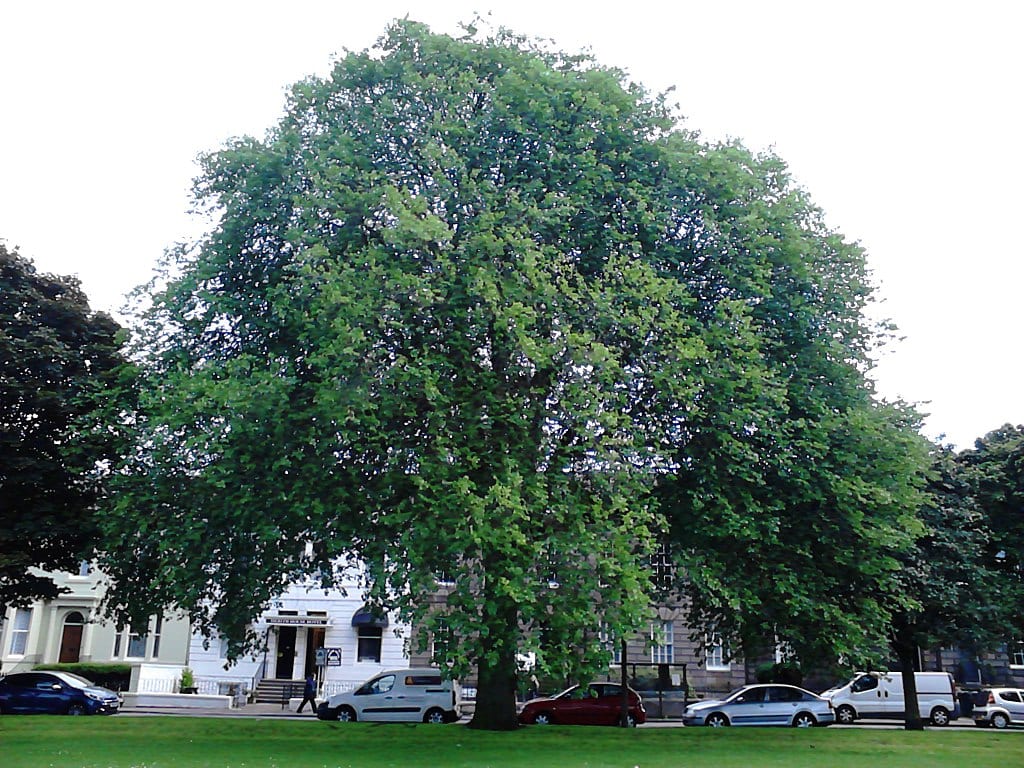
Hard Elms & Their Uses
Winged Elm
Winged elm is a pricier hard elm tree because its slow growth rate hinders production. The winged elm has interlocking grains, as you would expect from an elm, and the coloration of sap and hardwoods are the same. They have medium-brown tones with a reddish hue that can be subtle or more robust. Interlocked grain makes it harder to work with, but this is easily remedied with the correct sharp tools.
It’s essential to appreciate the grain type, even if it’s not the ideal pattern, because the interlocking grain causes it to have that fantastic shock-resistant property. This becomes highly relevant when crafting products like furniture, baseball bats, and anything else that is constantly enduring force or pressure. Planing with winged elm might cause tear-out and a potentially fuzzy surface. In this case, starting over is just part of the daily grind when working with elm.
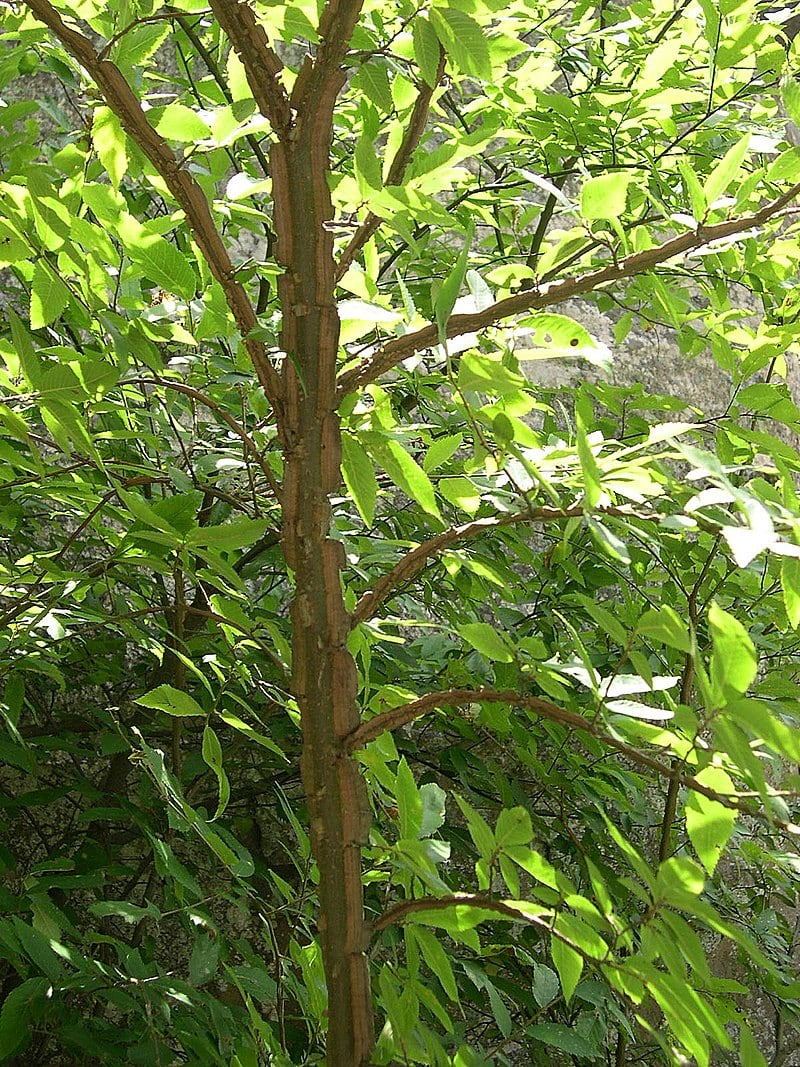
Cedar Elm
The Cedar elm is a deciduous tree with a long lifespan and can grow moderately fast. It can reach heights of 65-100 feet or more. It is similar to the winged elm and has the same grain pattern as other elms. Working with smaller tools or machines can be complex for the beginner, so it’s good to have a guide when working with Cedar Elm the first time.
It is used for furniture, boxes, baskets, veneer, paper making, and wood pulp in the current market. Cedar Elm is moderately priced and attainable. Like other elms, rot resistance is non-existent, so take care when crafting items for outdoor use. Certain coatings and finishes can increase resistance to rot for outdoor use, but it’s risky.
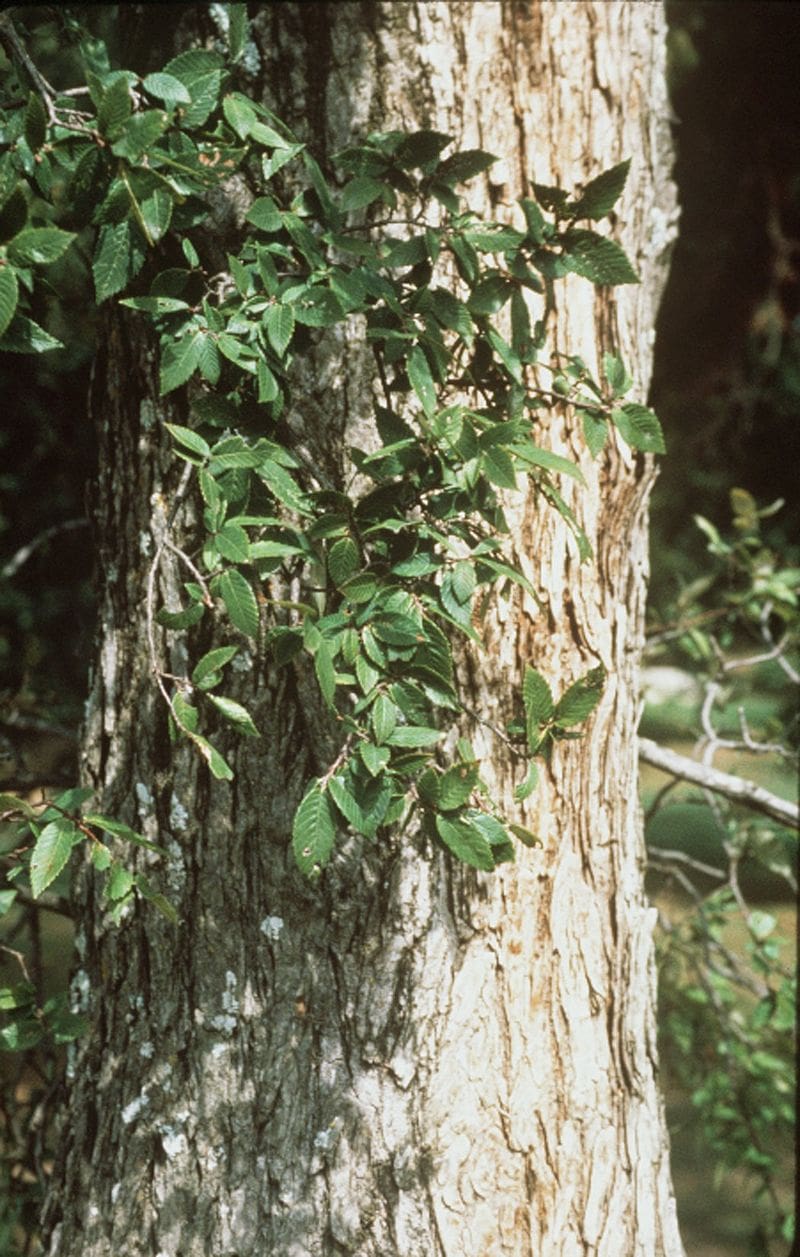
Rock Elm
The Rock elm is another species called the cork elm, and you can find it in the midwest of the United States. It has a very high density and is on the heavier side. When using rock elm, your items will be heavier than other species, but use has a lot to do with individual preference.
Most prefer lighter furniture, so this may not be the right type for that job. More caution will be needed when working with power tools, as the interlocking grain and increased density make Rock elm a significant challenge. Still, you can craft some exquisite furniture or sports accessories. It would make an excellent baseball bat or hockey stick.
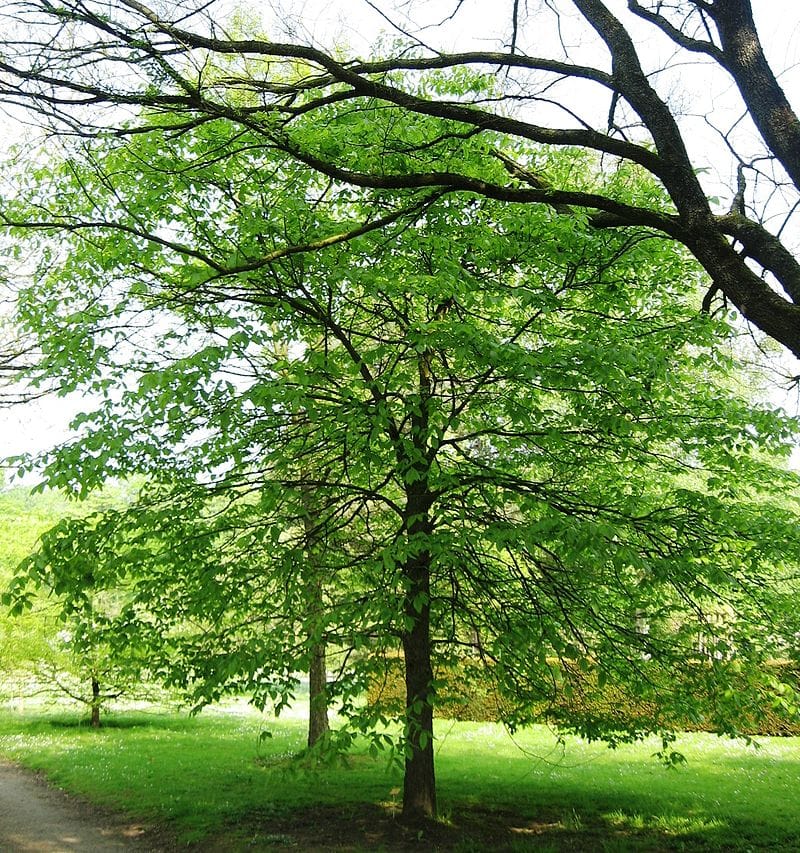
Using Elm Wood as Firewood
There are many different types of wood out there, and here I’ll break down if elm wood is worth your time when fueling a campfire. Overall, elmwood isn’t perfect for use as firewood, but it’s not the worst. If you have nothing lying around, it’s OK to use it, but here are some things to consider.
It has a meager heat output, so that you won’t be optimally warm. If it’s chilly outside, you’ll want to stay away from elm firewood because it’s inefficient at warming up a space. You might have a more challenging time trying to split elm wood than other grains because it’s highly resistant.
It also produces moderate smoke without the satiating heat you would get from optimal woods. It doesn’t have a pleasant burning smell, which rules out smoking food over the open fire. Despite this, there are a couple of areas where elm wood shines. First, it doesn’t produce many sparks, and that’s good for your safety. Secondly, elmwood tends to make coals better than heavier wood.
There are three tiers of firewood, and elm wood falls at the bottom, but that doesn’t mean you can’t burn it. If you do, it’s important to season it correctly for the best results, and this will also reduce the swamp-like smell it emits from the smoke. If you have a lot of spare elm wood, you want to get rid of, burning it is fine, but the odor could overwhelm and linger.
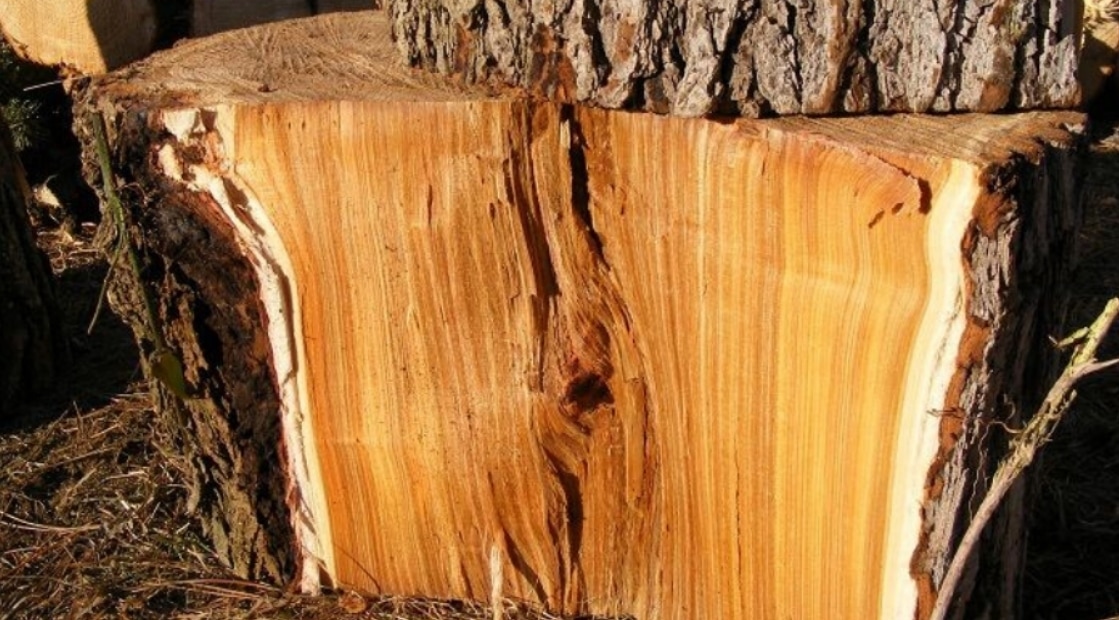
Elm Wood & Carving
Elmwood is widely known as a softer hardwood, but it’s incredibly tough and is difficult for hand-carving purposes. The key here is to use carving machines to produce fantastic results. Modern power tools will open the door to many carving possibilities. You can also achieve greater accuracy when cutting through the interlocking grain patterns. This would be impossible to reach a higher level of precision without turning to modern technology.
The grain of elm wood is a twisting pattern that makes it difficult to carve without these tools. However, they contribute to a captivating final product, and carving gives artistic value to any wood project. Precise carvings may be implemented in various furniture styles to provide a unique result. Chair legs are often ornamented with exquisite detailing that could only be accomplished through a machine with elm wood.
Advantages of Elmwood
- Priced Moderately
- Lightweight & Soft
- Beautiful Appearance
- Extremely versatile
- It finishes nicely with stains & dyes
- Artistic and meaningful material
Disadvantages Of Elmwood
- Non-durable material
- Unappealing odor when burned
- Highly resistant to splitting
- Interlocking grains make it hard to work with
- Can’t be used for outdoor furniture reliably
- Not ideal for firewood
Frequently Asked Questions
Question: Is Elm Wood suitable for the outdoors?
Answer: Because elm wood tends to rot and isn’t resistant to insects, it’s best to take on projects where you know the wood will remain indoors. Some additional treatments can enable elmwood for outdoor use if you desire, but generally, it’s wiser to limit it to indoor applications.
Question: Will Elm Wood have adequate shock resistance?
Answer: Elm Wood is highly resistant to shock, so it’s perfect for crafting sports tools for on the field. It’s excellent for creating reliable hilts.
Question: Are there any problems with the grain pattern when cutting?
Answer: The grain of elm wood is interlocked, which might be problematic when looking for impeccable precision. For the most part, it’s workable and conforms well to your plans. It can be worked and carved by hand or with machinery. Be mindful when working with tricky quarter-sawn surfaces.
Conclusion: Elmwood Is Useful & Manageable
Elmwood has a unique quality that keeps drawing everyone back for more, with sturdy and shock-resistant properties that make it reliable. On top of this, the grain pattern is one of the timeless favorites for attractive furniture that makes you feel warm inside. There will be some obstacles when working with wood in any shop regularly. This is because the coarse texture and the patterns can sometimes be unforgiving.
Despite this, the final result is worth the sweat of your brow and will increase your skill working with an incredible species. You can choose to work with any of the mentioned types of elmwood, but it’s important to have priorities straight while keeping this wood indoors. The wood should always be adequately prepared before working to ensure the best results. Some devices can accurately measure moisture content before working if you’re not sure it’s dry. I highly recommend trying this, so you have peace of mind.
Elmwood that is still relatively wet will be a nightmare, so ensure it’s perfect for the best results! One of the key takeaways from using elm wood is it’s ideal for crafting items that will be under shock. Elmwood is suitable for long-term durability and can support your weight under furniture. It falls short when standing up against insects or rot but will serve you well overall. Now it’s time to craft with elm wood; you won’t be disappointed!

